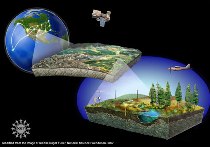Investigating the footprint of climate change on phenology and ecological interactions in north-central North America
Author(s): James Eric Biardi
Fairfield University
1613 total view(s), 2926 download(s)
Summary:
The module was used in lab following lecture material on pairwise interactions in ecology (emphasizing consumption, competition, mutualism), and parallel to community ecology (emphasizing food web structure, succession, resistance and resilience).
Contents:
Biardi teaching notes phenology.docx(DOCX | 15 KB)
FallsVillageCT062658_2045.csv(CSV | 35 KB)
assignment_on.gif(GIF | 2 KB)
cal_year_event.gif(GIF | 338 B )
cmlink_generic.gif(GIF | 83 B )
document_on.gif(GIF | 2 KB)
folder_on.gif(GIF | 2 KB)
TXT.rtf(RTF | 32 KB)
xid-3051647_1.gif(GIF | 11 KB)
Ohio_pheno.csv(CSV | 7 KB)
Ohio_temp.csv(CSV | 1 KB)
PhenologyAssignment1.docx(DOCX | 83 KB)
PhenologyAssignment2.docx(DOCX | 118 KB)
PhenologyAssignment3.docx(DOCX | 112 KB)
StamfordCT067970_6658.csv(CSV | 38 KB)
StorrsCT068138_8237.csv(CSV | 35 KB)
- Investigating the footprint of climate change on phenology and ecological interactions in north-central North America
- License terms
Description
The module was implemented at Fairfield University by James Biardi.
- Course: BI 260: Ecology
- Course Level: This course is intended for 2nd or 3rd year undergraduate majors in Biology. It is one of several courses that can fulfill their ecology/evolution/diversity block requirement in the major.
- Instructional Setting: Lecture & Lab course
- Implementation Timeframe: The course ran 2 x 75 min/week of lecture and a 165 min/week lab for 15 weeks. The module was implemented as half of the lab period during weeks 12 and 13 of the course.
Notes
- Exercise 1 in the module was changed to incorporate USHCN data from Connecticut. Students were also provided with a map of NOAA climate regions in Connecticut. [File uploaded as Assignment1.docx]
- Exercise 2 was dropped, as there was insufficient variation across CT climate data for students to make informed regional analyses.
- Exercise 3 was used as presented in the module, with one additional question: “Compare the results from this study (Calinger et al. 2013) with the results of the study by Miller-Rushing and Primack (2008) of flowering times in Concord, MA. Did both projects use similar methods to assess temperature change? Phenological change? Has temperature changed in Concord at a similar rate to change in Ohio? Has temperature change affected flowing times in Concord as well?” [File uploaded as Assignment2.docx]
- Exercise 4 was used as presented in the module, with one additional question: “ Forrest and Miller-Rushing (2010) suggest several ecological effects of phenological shifts (see pp. 3105–6). Which of these effects (if any) do you find likely for the columbine-hummingbird mutualism? Which of these effects (if any) do you find likely for the Celastrina-dogwood pairing?” [File uploaded as Assignment3.docx]
- Exercise 5 was dropped due to time constraints.
Cite this work
Researchers should cite this work as follows:
- Biardi, J. E. (2018). Investigating the footprint of climate change on phenology and ecological interactions in north-central North America. ESA Data Discovery FMN (2017), QUBES Educational Resources. doi:10.25334/Q4TM4H
